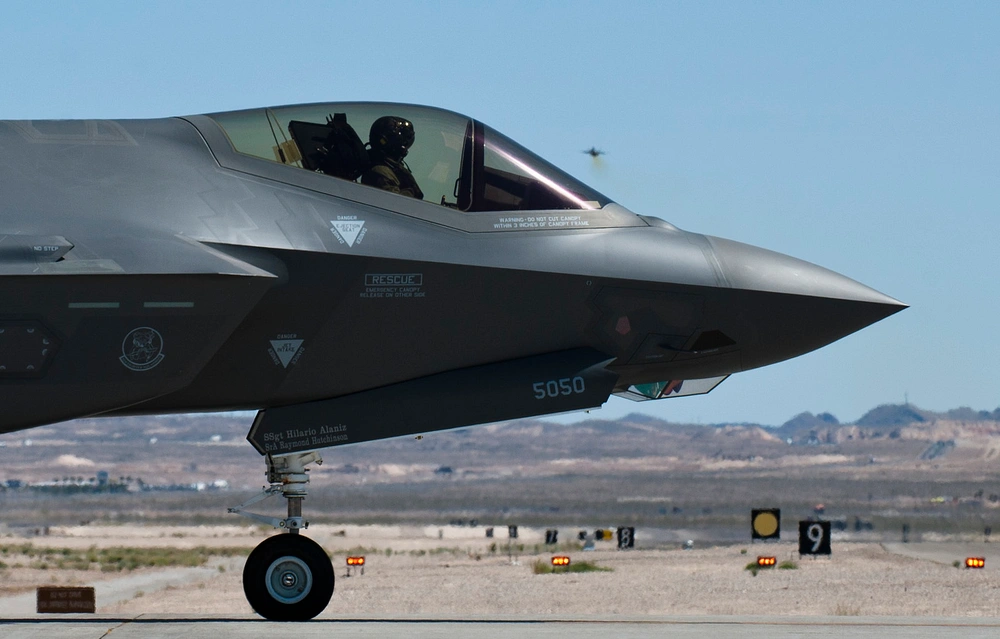Army misses its recruiting goal again and announces sweeping recruiting reforms in response
- By Military Times
Share This Article

This article by Davis Winkie was originally published by the Army Times.
The Army has launched far-reaching reforms that will transform how it attracts and recruits new soldiers, its top leaders said in a press conference today.
The moves come after the service failed to meet its recruiting targets for two consecutive fiscal years, which caused its end strength to fall from an original level of 485,000 in late 2021 to around 452,000 active duty soldiers today – its smallest full-time force since 1940, the year before the U.S. entered World War II.
Army Secretary Christine Wormuth said the changes came after an in-depth recruiting study that compared years of internal Army data and organizational structure against labor market trends and private sector practices.
“What we’re doing is really focused on changing what we can control [and] seizing our own destiny,” Wormuth said.
The reforms will begin immediately, though some will take years to complete. According to the secretary of the Army, they will include:
- Establishing new specialized enlisted and warrant officer recruiting career fields that will replace the existing 79R MOS and eventually abolish involuntary recruiting assignments.
- Formally increasing recruiters’ mandate to woo prospective soldiers with college education, due to the shrinking proportion of workforce members who have only a high school education.
- Creating an experimentation directorate within the Recruiting Command that is isolated from current-year production pressure.
- Integrating effective data analysis to support recruiting policy decisions after the study group found the service has failed to verify whether historical changes were effective.
- Reassigning Recruiting Command to report directly to Wormuth, raising its commanding general rank to a three-star level, and extending the command tour length to four years.
- Reassigning the Army Enterprise Marketing Office to report to Recruiting Command.
Related: The Marine Corps is not struggling with recruiting and this may be due to its unique nature

Wormuth and George said the Army has failed to keep up with trends in the U.S. labor market in recent decades, and recent high-profile failures to meet accession goals were the culmination of a long-term trend. The Army has not met its contract goals since 2014, which has slowly drained its pool of “delayed entry” recruits who are awaiting training and forced it to rely on late-year recruiting surges fueled by recruiter willpower rather than effective and efficient practices.
The Army’s all-out effort to make its recruiting goals both last year and this year yielded some important successes. One such example is the Future Soldier Prep Course for applicants who need to improve their fitness or test scores before they can go to basic training, Wormuth emphasized that “continuing to sort of have the same approach but do it better and harder was not going to get us where we need to be.”
The Army’s leaders expressed confidence that shifting the Army’s recruiting model to more closely resemble that of the private sector will help it reach markets that it has struggled to tap. They believe it will also nest well with the service’s recent marketing refresh, which rebirthed the classic “Be all you can be” slogan.
“We’re going to train [recruiters] to start using digital job boards…we’re going to start piloting large-scale career fairs in major population centers,” Wormuth said. “Instead of just having a table in a high school cafeteria, we’re really going to try to do something more like private sector companies do.”
But because the reforms will take time to implement and reach their full potential, the Army may have to make tough decisions on cutting units it can’t man in the interim due to its falling numbers.
Wormuth, however, is confident that any unit-level force structure reductions will be “very modest [and] targeted,” and will fall primarily on organizations that are redundant or haven’t been used a lot in recent years.
Read more from Sandboxx News
- America’s legendary Abrams won’t cut it by 2040, new report concludes
- NATO members are spending big on defense because of Russia – but one non-NATO member is doing the most
- These are the 5 most underrated Army jobs
- America’s new precision strike missile has China in its crosshairs
- How serious are ‘War Thunder’s’ classified document leaks?
Related Posts
Sandboxx News Merch
-

‘AirPower’ Classic Hoodie
$46.00 – $48.00 Select options This product has multiple variants. The options may be chosen on the product page -

‘Kinetic Diplomacy’ Bumper Sticker (Black)
$8.00 Add to cart -

‘Sandboxx News’ Trucker Cap
$27.00 Select options This product has multiple variants. The options may be chosen on the product page
Military Times
MilitaryTimes.com is a part of the Sightline Media Group, formerly known as the Army Times Publishing Company, which first published Army Times in 1940. Throughout its history, the company has a strong heritage and tradition of meeting the highest standards of independent journalism and has expanded with publications serving all branches of the U.S. military, the global defense community, the U.S. federal government, and several special interest, defense-oriented industry sectors.
Related to: Military Affairs

Why the Air Force wants to retire its A-10 fleet early – and why it’s right to do so

The Air Force wants to give its F-35 a big boost in range

‘The Thing:’ a Soviet children’s gift with a sinister purpose

The unassuming Beretta Model 71 was the pistol of choice for some of Israel’s best units
Sandboxx News
-

‘Sandboxx News’ Trucker Cap
$27.00 Select options This product has multiple variants. The options may be chosen on the product page -

‘AirPower’ Classic Hoodie
$46.00 – $48.00 Select options This product has multiple variants. The options may be chosen on the product page -

‘AirPower’ Golf Rope Hat
$31.00 Select options This product has multiple variants. The options may be chosen on the product page -

‘Sandboxx News’ Dad Hat
$27.00 Select options This product has multiple variants. The options may be chosen on the product page
